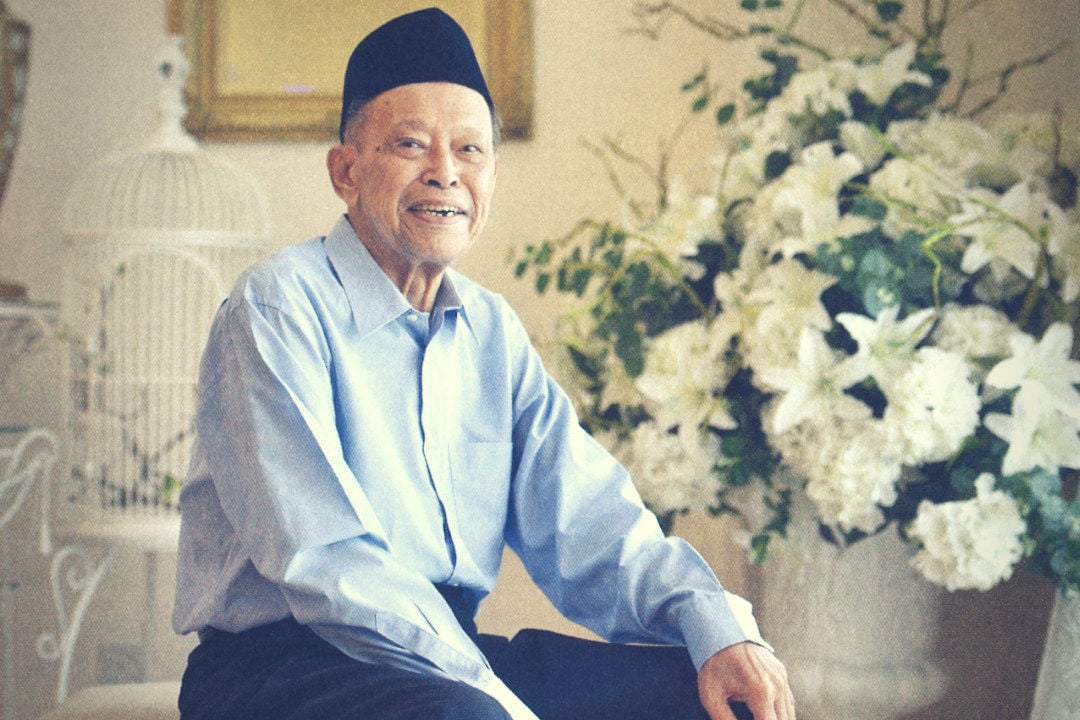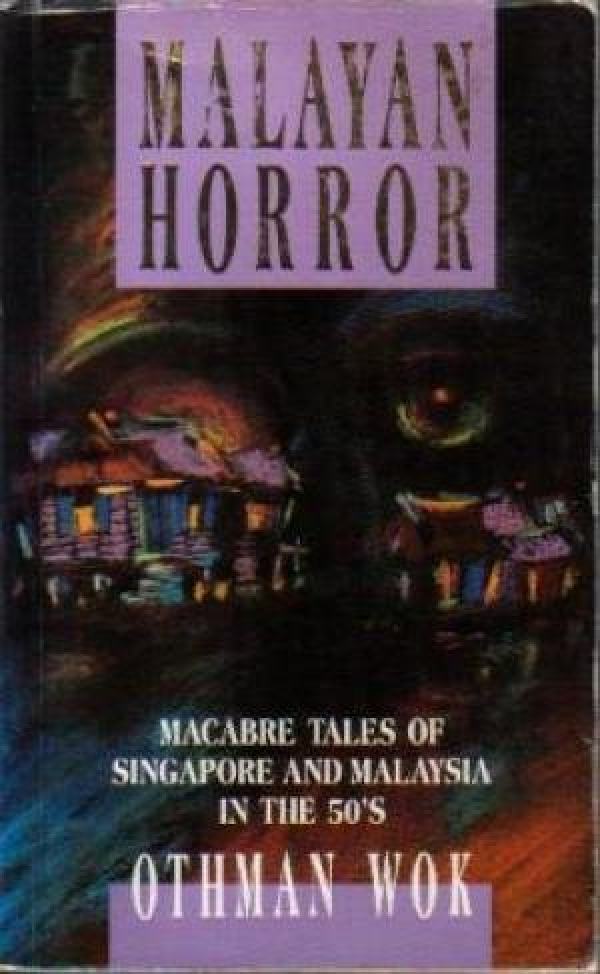How ghost stories helped launch the career of one of Singapore’s pioneer leaders
Before becoming Singapore’s first social affairs minister, Othman Wok thrilled readers with horror tales that revived a struggling magazine

The First Fools: B-Sides of Lee Kuan Yew’s A-Team is a new anthology about Singapore’s founding leaders, spotlighting the unexpected private lives behind the political legends. This excerpt, written by Jaime Niam, reveals a little-known chapter in the life of Othman Wok – Singapore’s first minister for social affairs and a key advocate for multi-racialism – whose early passion for ghost stories helped revive a struggling Malay-language magazine.
When Othman was five years old, he woke up one day with an abnormally bloated stomach. He had been sick for months, and only seemed to be getting worse. His family was growing increasingly worried.
To them, there could only be one logical reason he had not gotten better: he “kena sampuk” (got possessed).
This was no job for the weak. Othman’s family quickly brought in a line-up of traditional healers, or dukuns, in a bid to cure him. It worked, at first. But the ever-sickly child fell victim to an even more severe bout of illness just seven months later, once again requiring the services of a dukun, who doused him with holy water to ward off evil spirits.
“One good thing is that after these early sufferings, I was never ill, apart from the occasional headache or flu. I’ve never been admitted to the hospital,” Othman said in his biography.
In modern medicine, Othman would simply have been diagnosed with malaria. Some may even regard his childhood episodes with a tinge of scepticism.
But for someone who was raised in a traditional kampong by a family of orang laut (people of the sea) descent, animistic and supernatural forces were not mere superstitions or products of primitivism but a natural way of life.

“I think it’s in our DNA. For us Muslims, we believe that there is a physical, real world, and there’s also the mysterious and spiritual world. It’s part and parcel (of life), and they coexist,” explained Lily Othman, Othman’s third daughter.
Indeed, kampongs were hospitable environments for the nurturing of such beliefs, located in secluded wooded areas. Electricity was not readily available back then, and villagers often gathered around kerosene lamps to swap spooky stories in the evening.
And so Othman’s interest in the paranormal was cultivated from an early age. His family regaled him with thrilling, often scary, stories in his childhood, the most memorable being the one where his great-grandfather single-handedly fought off a tiger in the jungle with his parang. Though there was never any mention of the beast being more than flesh and bone, the harimau jadian, a mythical beast analogous to a were-tiger and native to Malaysia and Indonesia, had long prowled the region’s imagination.
Said to be people who were driven by bloodlust and could turn into man-eating tigers, they were one of the creatures documented by British scholar and anthropologist Walter William Skeat in Malay Magic: Being an Introduction to the Folklore and Popular Religion of the Malay Peninsula.
Othman, in turn, “took a special delight in scaring (his friends) with ghostly tales,” said his long-time friend Latiff Arman, who died in 1994, in his biography.
Unhandled type: inline-plus-widget {“type”:”inline-plus-widget”}
But traditional as his family was, Othman’s father also had more progressive inclinations, particularly concerning his education. The schoolteacher was among the first graduates of the Sultan Idris Training College (now known as Sultan Idris Education University), which at the time was the highest education a commoner could attain.
He wanted better for his son, so when the opportunity arose for a select batch of Malay students to receive an English education, his father secured a spot for 10-year-old Othman in Radin Mas English School.
Othman would later go on to study at premier secondary school Raffles Institution, like many of his future political colleagues, making him one of a small number of Malays in his generation to receive an English education.

Supernatural start
Following World War II, a 21-year-old Othman needed to find a job with virtually no work experience. But fortune would soon smile upon him.
After a failed stint as a radio technician that barely lasted a year, Othman landed a job at Malay-owned newspaper Utusan Melayu. He was hired in October 1946 by its co-founder and editor-in-chief, none other than the man who would become Singapore’s first president, Yusof Ishak.
When he revealed that Othman would earn S$45 a month should he take up the job, the young man said yes immediately. The pay was almost double his salary at the radio repair shop, and sounded too good to be true. And this was in a time when a plate of mee goreng cost only two cents.
That his administrative job at the paper would last just a week before he received an unexpected promotion was also completely fortuitous. “One day, while I was working, I heard a commotion,” he recalled in his biography. “One floor above me was the editorial department, and that was where the shouting was coming from.”
The source of the ruckus was Yusof, who was violently berating a reporter for not attending a reception he was invited to, culminating in his spontaneous termination. The next thing Othman knew, Yusof had stormed out of his office and pinned him with a glare. “Othman, would you like to work in the editorial department?” he demanded. Once again, perhaps because he was too intimidated to say otherwise, Othman agreed.
That was how his career as a journalist began, despite him having no formal training. He simply had to learn on the job as the only roving reporter at the time, mainly reporting on crime and paying daily visits to the Criminal Investigations Department as well as both the High Court and lower courts for stories.
Never would he have guessed that six years later, in 1952, he would be given an additional – and most unexpected – assignment. Sales for Utusan’s monthly entertainment magazine, Mastika, were plunging rapidly, and his boss Yusof had just the idea to save it from impending doom.
His plan? To publish tales of the supernatural in Mastika in hopes of boosting sales.
For someone who grew up hearing about the supernatural, Othman was the perfect man for the job. Churning out these stories was second nature to him.
His experience in the crime beat surely came in handy too, with many speculating that narratives like “The Mad Artist” could have been inspired by real-life gruesome murders he had reported on.
In the short story, an old inmate in a psychiatric institution is reminiscing about his artist days to a reporter, only for the reporter to find out that his works involved dissecting and torturing living creatures as inspiration. From tiny beetles, he progressively moved on to larger prey, including a kitten, a lamb, and finally his wife, whose blood he used in place of paint.
“Malays just love stories like these,” Othman said in an interview with The New Paper in 2000. “In those days, horror stories were the in-thing and the two cinema giants Shaw and Cathay were churning out ghost stories like Pontianak.”
He was referring to the two trilogies of films that Cathay-Keris Studio and Shaw Brothers’ Malay Film Productions released over the course of 1957 to 1965, both of which centred on the quintessential figure of the malevolent spirit of a woman who died during childbirth.
It was an era in which the concept of Malayan horror was beginning to take shape, with Othman being one of the genre’s earliest pioneers.
Sure enough, circulation of the magazine more than tripled from 6,000 to about 20,000, peaking at 25,000. At the same time, he also wrote weekly ghost stories for Utusan Zaman, the Sunday edition of the paper.
They were incredibly well-received – and perhaps a little too effective at scaring readers. “Some men even wrote in to ask him to stop writing these stories as their wives, daughters, and mothers were afraid to go into the back kitchen or bathe at the well after sunset. Don’t forget, this was the 1950s – bathrooms and kitchens were outside the house,” said Lily.

Excerpted from The First Fools: B-Sides of Lee Kuan Yew’s A-Team, edited by Peh Shing Huei and published by The Nutgraf Books.